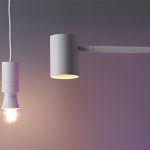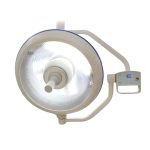Green LED Light: Understanding Its Function and Benefits
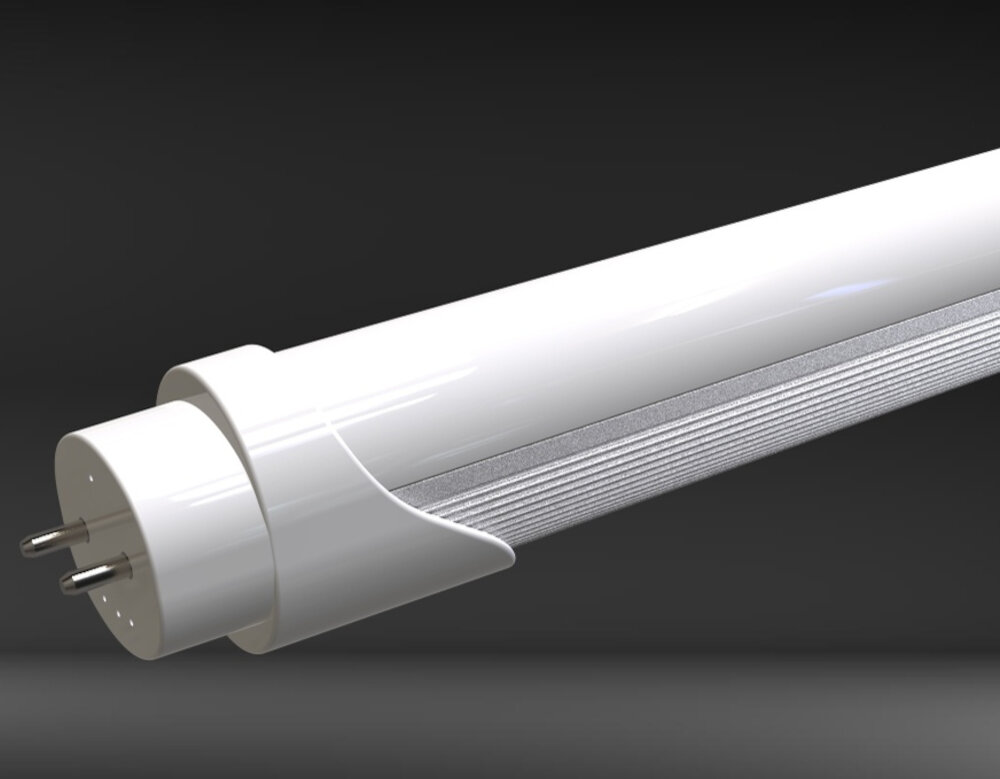
Green LED light technology is becoming increasingly popular across the world, thanks to its numerous benefits and advantages. LED lights are energy-efficient, long-lasting, and eco-friendly. Green LED lights, in particular, are highly sought after because of their unique properties and uses. In this article, we will delve deeper into the functionality and benefits of green LED light technology. Green LED lights are semiconductor devices that emit light when an electric current is passed through them. They are made up of a crystal chip that is mounted on a lead frame and encapsulated in a resin lens. The process of creating green LED lights involves the addition of a phosphor material that produces a green light when excited by the blue LED chips. Green LED lights are known for their high brightness and low power consumption, which makes them ideal for a variety of applications. From traffic signals to indoor lighting, green LED lights are revolutionizing the way we use light.
A green LED light is a semiconductor device that emits visible light in the green region of the electromagnetic spectrum. It is a type of light-emitting diode that is commonly used in a variety of applications such as traffic lights, streetlights, electronic devices, and decorative lighting. The green LED light produces a wide range of wavelengths, which are determined by the materials used to manufacture it. The light output is highly efficient, making it an ideal choice for energy-saving applications. The green color of the LED light is achieved by using a combination of materials that emit light in the green region of the spectrum when an electric current is passed through them. The benefits of using green LED lights include their long lifespan, low power consumption, and environmental friendliness.
LED (Light Emitting Diode) technology has come a long way since its inception in 1962 by Nick Holonyak Jr. While the early versions were only capable of producing red and green light, the development of blue LEDs in the 1990s opened the door to the creation of white LEDs. This innovation revolutionized the lighting industry, providing an energy-efficient and long-lasting alternative to traditional incandescent bulbs. Today, LED technology is used in a wide variety of applications, including traffic lights, electronic displays, and home lighting. As the world becomes more environmentally conscious, LED lights have become increasingly popular due to their low energy consumption, reduced carbon footprint, and long lifespan.
How Green LED Light Works
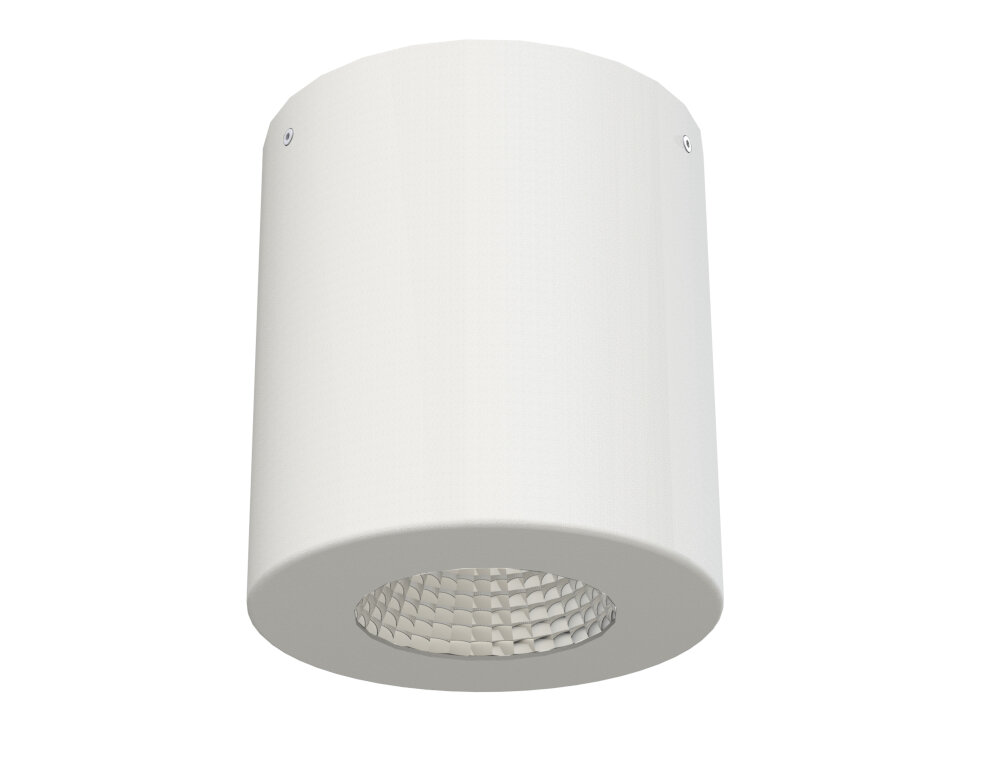
Green LED lights are a type of light-emitting diode that produces green light when electricity is passed through it. The working principle of a green LED light is based on the process of electroluminescence. When an electrical current passes through the semiconductor material of a green LED, it excites the electrons in the material, causing them to jump into higher energy levels. As the electrons return to their lower energy levels, they release energy in the form of photons or light. The color of the light produced depends on the energy difference between the two levels. Green LED lights are made from a combination of semiconducting materials that produce light in the green spectrum of the visible light range. Green LED lights are highly energy-efficient and durable. They consume less energy than traditional incandescent or fluorescent bulbs, making them an eco-friendly lighting option. They also have a longer lifespan than traditional bulbs, reducing the need for frequent replacements. Green LED lights are commonly used in a range of applications, including traffic lights, automotive lighting, and outdoor lighting. They are also used in electronic devices, such as smartphones, tablets, and computer screens. Due to their energy efficiency and durability, green LED lights are becoming increasingly popular in homes and businesses as a cost-effective lighting solution.
Green LEDs are made up of a variety of semiconductor materials that enable them to emit light in the green spectrum. One of the most commonly used materials in green LED production is indium gallium nitride (InGaN), which produces a bright green color and has high efficiency. Another material used is aluminum gallium indium phosphide (AlGaInP), which emits a slightly yellowish-green light and is often used in outdoor lighting applications. Additionally, green LEDs can also be made using organic materials such as polymers or small molecules, which have the advantage of being more flexible and cost-effective. Regardless of the material used, green LEDs offer a range of benefits such as energy efficiency, long lifespan, and environmental friendliness, making them an ideal choice for a variety of lighting applications.
The energy conversion process is an essential aspect of green LED lights, which involves the transformation of electrical energy into light energy. This process is highly efficient and eco-friendly, as it does not produce any harmful emissions, unlike traditional lighting methods. The green LED lights use a semiconductor material that emits light when an electric current passes through it, generating photons that produce the desired light output. The energy conversion process in green LED lights is highly versatile, allowing for the production of a wide range of light colors and intensities to suit various applications. Additionally, green LED lights have a longer lifespan and consume less power than traditional lighting methods, making them a more sustainable and cost-effective lighting solution.
When it comes to understanding the function and benefits of a green LED light, it is important to first explore the concept of wavelength and the color spectrum. Wavelength refers to the distance between two consecutive peaks or troughs in a wave, and it is measured in nanometers (nm). The color spectrum is the range of colors that can be produced by light, and it is determined by the wavelength of the light. The color green has a wavelength of around 495-570 nm, which falls in the middle of the visible spectrum. Green LED lights are able to produce this specific wavelength of green light, which has been found to have numerous benefits, including improved mood and concentration, reduced eye strain, and increased plant growth. By harnessing the power of the color green through LED lighting technology, we can enhance our daily lives in a variety of ways.
Benefits of Green LED Light

Green LED lights have been gaining popularity in recent years, and for good reason. Not only are they aesthetically pleasing, but they also offer a variety of benefits. One of the main advantages is energy efficiency. Green LED lights consume significantly less energy than traditional incandescent bulbs, making them an ideal choice for those who want to reduce their electricity bills and their carbon footprint. This is because green LEDs are designed to emit light at a specific wavelength, which means they don’t waste energy as heat or other forms of light. Additionally, LED lights have a longer lifespan than traditional bulbs, which means that they need to be replaced less frequently, further reducing their environmental impact. Another benefit of green LED lights is their versatility. They can be used in a variety of applications, including residential, commercial, and industrial settings. For example, green LED lights can be used for outdoor lighting, such as streetlights and parking lot lights, as they offer a high level of brightness and visibility. They can also be used for indoor lighting, such as in offices and homes, as they are available in a range of brightness levels and color temperatures to suit different needs. Furthermore, green LED lights are also used in the automotive industry, as they provide better visibility and safety for drivers. Overall, the benefits of green LED lights are numerous, making them an excellent choice for those who want to save energy, reduce costs, and protect the environment.
Energy efficiency is a crucial aspect of green LED lights that offers immense cost savings. These light-emitting diodes consume significantly less energy than their traditional counterparts, resulting in lower electricity bills. In addition, they have a longer lifespan, which means that they need to be replaced less frequently, reducing maintenance costs. Green LED lights also emit less heat, which can help decrease cooling costs in hot climates. By choosing energy-efficient lighting solutions, individuals and businesses can reduce their carbon footprint and contribute to a more sustainable future while also reaping the financial benefits of lower energy consumption.
The use of green LED lights has gained popularity due to its energy efficiency and low environmental impact. Traditional light bulbs emit large amounts of carbon dioxide into the atmosphere, contributing to global warming and climate change. Green LED lights, however, use much less energy and produce far less carbon emissions, making them an environmentally sustainable choice. Additionally, green LED lights have a longer lifespan, reducing the amount of waste generated from frequent replacements. By choosing green LED lights, individuals and businesses can make a positive impact on the environment and contribute to a more sustainable future.
Versatility is one of the key advantages of green LED lights, making them suitable for various applications. These lights emit a bright and clear green light that is ideal for use in traffic signals, emergency lights, and streetlights, among others. They are also used in horticulture, where they can provide the necessary light spectrum for the growth and development of plants. Additionally, green LED lights are commonly used in advertising, where they can add a vibrant and eye-catching appeal to signs, displays, and billboards. The versatility of green LED lights makes them a valuable asset in many industries, providing energy-efficient and cost-effective lighting solutions.
Green LED lights offer various health and safety advantages. Firstly, they emit low levels of heat, which reduces the risk of burns or fire hazards. This makes them ideal for use in enclosed spaces where heat buildup is a concern. Secondly, green LED lights do not emit harmful UV radiation, which can cause skin damage and eye problems. This makes them a safer and healthier lighting option for people who spend a lot of time in the lighted area. Additionally, green LED lights have a long lifespan, which means they require less frequent replacement, reducing the risk of accidents caused by maintenance work. Overall, the health and safety benefits of green LED lights make them a reliable and sustainable lighting solution for various settings.
Applications of Green LED Light

Green LED light finds its application in various fields, including medical, environmental, and automotive. In the medical field, green LED light is widely used in photodynamic therapy, which is a non-invasive treatment for cancer. Photodynamic therapy involves the administration of a photosensitizer drug, followed by the exposure of the affected area to green LED light. The light activates the photosensitizer, which then destroys the cancer cells. Green LED light is also used in surgery, where it helps to enhance the contrast between healthy and diseased tissues, making it easier for surgeons to operate. In addition, green LED light can alleviate migraine headaches and improve sleep quality by regulating the body’s circadian rhythm. Green LED light is also used in environmental applications, such as in greenhouses, where it can be used to enhance plant growth. Green LED light has been shown to stimulate photosynthesis, which is the process by which plants convert light into energy. This can lead to increased crop yields and faster plant growth. In addition, green LED light can be used to reduce energy consumption in buildings by replacing traditional lighting systems. Green LED light consumes less energy and lasts longer than traditional lighting, making it an eco-friendly and cost-effective option for lighting applications. Overall, the applications of green LED light are diverse and continue to expand as technology advances.
The lighting industry has undergone a significant transformation in recent years due to the emergence of energy-efficient and eco-friendly lighting solutions. LED lights have become increasingly popular in the industry due to their numerous benefits, including reduced energy consumption, longer lifespan, and lower maintenance costs. Green LED lights, in particular, have gained widespread recognition due to their environmentally friendly properties. They are free of toxic materials such as mercury and lead, emit less heat, and produce brighter light than traditional lighting options. With the continued advancements in LED technology, the lighting industry is poised to continue its evolution towards more sustainable and efficient lighting solutions.
The automotive industry is one of the biggest industries in the world, with a significant impact on the environment. Green LED lights are becoming increasingly popular in the automotive industry due to their energy efficiency, durability, and versatility. They are used in cars for a variety of purposes, including interior and exterior lighting, brake lights, turn signals, and headlights. Green LED lights are not only cost-effective but also have a much longer lifespan compared to traditional light bulbs, reducing the need for frequent replacements. Moreover, LED lights produce less heat, which can lead to a reduction in the vehicle’s overall energy consumption, making them an excellent choice for those looking to reduce their carbon footprint.
The agriculture industry is an essential sector that is responsible for providing food and other essential resources to the world’s growing population. With the advancements in technology, the industry has become more efficient, sustainable, and profitable. One of the latest innovations in agriculture is the use of green LED light technology, which has numerous benefits. Green LED lights have been shown to improve plant growth and development, increase yields, and reduce energy costs. Additionally, these lights have a longer lifespan than traditional lighting, making them a cost-effective and environmentally friendly option for farmers. As the world’s population continues to grow, the agriculture industry must continue to innovate and adopt new technologies to meet the increasing demand for food and resources.
The medical industry has been constantly evolving and introducing new technologies to improve patient care and outcomes. One such innovation is the use of green LED light therapy. Green LED light has been found to have numerous benefits in medical settings, including reducing inflammation, improving wound healing, and even treating certain skin conditions. Additionally, green LED light is non-invasive and has no known side effects, making it a safe and effective treatment option for many patients. As the medical industry continues to explore the potential of green LED light therapy, it has the potential to revolutionize the way we approach certain medical conditions and improve patient care.
In summary, the green LED light has a wide range of benefits and applications. It is an energy-efficient and cost-effective lighting solution that is commonly used in traffic signals, electronic displays, and automotive lighting. Green LED lights are also popular in the horticultural industry, as they can enhance plant growth and improve crop yields. Additionally, this type of lighting has therapeutic benefits and is used in light therapy for skin conditions, mood disorders, and sleep disorders. Overall, the green LED light is a versatile and sustainable lighting option that has numerous practical applications and health benefits.
The future of green LED technology is bright, as it continues to evolve and improve. With growing concerns about the environment and a need for more sustainable energy sources, green LED lights are becoming increasingly popular. The efficiency and durability of these lights are unmatched, and they have a long lifespan compared to traditional lighting sources. Furthermore, advancements in technology are making green LEDs more cost-effective, which is driving their adoption. As more people are becoming aware of the benefits of green LED lights, their demand is expected to increase, further fueling research and development in this field. Ultimately, the future of green LED technology looks promising, and it is poised to play an important role in the transition towards a more sustainable and energy-efficient world.
Conclusion
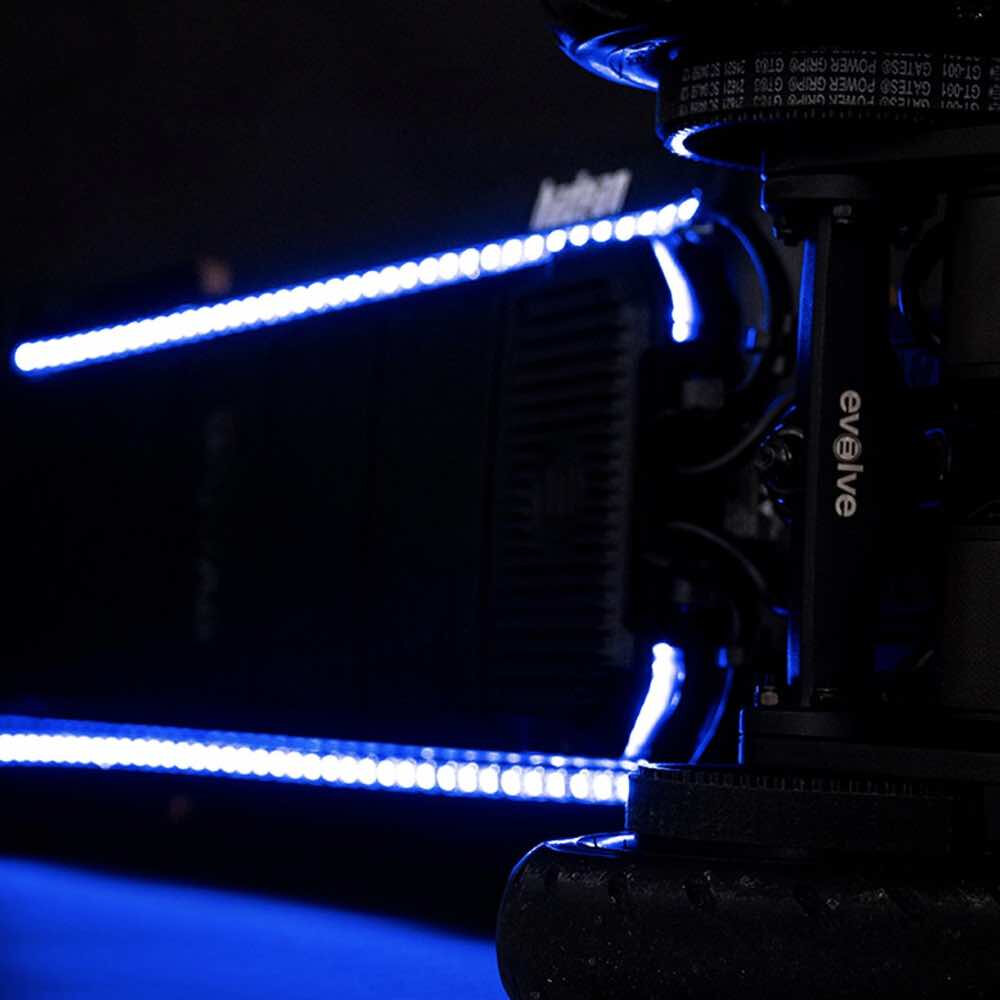
In conclusion, green LED lights have become an increasingly popular choice due to their many benefits. From energy efficiency to durability, these lights offer a wide range of advantages that make them an ideal choice for various applications. Whether it’s for lighting up a room, decorating a space, or improving visibility, the green LED light is an excellent choice. Its unique function and color make it stand out from other lighting options, and the benefits it provides make it a wise investment for anyone looking to upgrade their lighting system. Overall, the green LED light proves to be a valuable addition to any home or business, providing a cost-effective, environmentally friendly, and long-lasting lighting solution.

